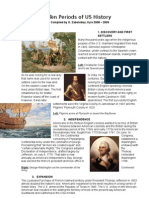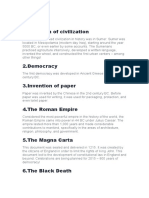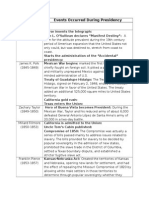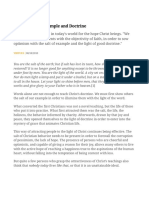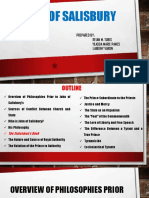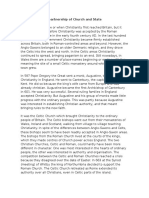History is full of remarkable events, many of which remain obscure despite their
strange or significant nature. Below are some rare and fascinating historical
moments that often fly under the radar but offer incredible insight into the human
experience.
1. The Dancing Plague of 1518
In July 1518, in Strasbourg (then part of the Holy Roman Empire), a bizarre event
unfolded: dozens of people began dancing uncontrollably for days on end. This
"Dancing Plague" started when a woman named Frau Troffea stepped into the street
and started dancing fervently. Within a week, dozens joined her, unable to stop
despite exhaustion, injury, or death.
Historical records suggest some danced for as long as a month, with many succumbing
to heart attacks, strokes, or sheer exhaustion. The exact cause remains debated —
theories include mass hysteria, ergot poisoning (a toxic mold on rye), or religious
fervor. This event is a powerful reminder of how psychological and social pressures
can manifest physically on a large scale.
2. The Shortest War in History: Anglo-Zanzibar War (1896)
The Anglo-Zanzibar War holds the record for the shortest war in history — lasting
between 38 and 45 minutes. It was fought between the United Kingdom and the
Sultanate of Zanzibar on August 27, 1896.
The conflict erupted after the pro-British Sultan Hamad bin Thuwaini died, and his
successor Sultan Khalid bin Barghash took power without British approval. Britain
issued an ultimatum demanding he step down. When Khalid refused, British naval
forces bombarded the palace, quickly overpowering the defenders. The war ended with
Khalid’s flight and the installation of a pro-British sultan.
3. The Great Emu War (1932)
In 1932, Australia waged a “war” against emus that were destroying crops in Western
Australia. Farmers enlisted military help, and soldiers armed with machine guns
attempted to reduce the emu population.
Despite their efforts, the emus proved surprisingly resilient and evasive, often
outrunning or dispersing the soldiers. After several failed attempts and negative
publicity, the military withdrew. The event has since become a quirky chapter in
Australian history, illustrating the challenge of wildlife management and human-
animal conflicts.
4. Operation Paul Bunyan (1976)
Following the killing of two US soldiers by North Korean forces over a tree-
trimming dispute in the Korean Demilitarized Zone (DMZ), the United States launched
“Operation Paul Bunyan” — a show of force to cut down a poplar tree obstructing
visibility.
The operation involved a convoy of military engineers backed by hundreds of armed
troops, helicopters, and fighter jets. The tree was cut down swiftly without
further conflict, but the incident highlighted the tensions and bizarre standoffs
characteristic of the Korean conflict.
5. Cleopatra and the Moon Landing Timeline
A fascinating historical fact is that Cleopatra VII, the last active ruler of the
Ptolemaic Kingdom of Egypt, lived closer in time to the first Moon landing (1969)
�than to the construction of the Great Pyramid of Giza.
Cleopatra ruled around 30 BCE, while the Great Pyramid was built circa 2560 BCE,
meaning the pyramid was already over two millennia old by the time of her reign.
This perspective shifts our understanding of ancient timelines and the vast
stretches of human history.
6. The Cadaver Synod (897 AD)
One of the strangest events in papal history was the Cadaver Synod. In 897 AD, Pope
Stephen VI put the corpse of his predecessor, Pope Formosus, on trial. The dead
pope’s body was exhumed, dressed in papal vestments, and propped up on a throne to
face charges of perjury and violating church canons.
The macabre trial ended with the corpse being found guilty, stripped of its papal
garments, and thrown into the Tiber River. This bizarre event reflected intense
political and religious turmoil in Rome at the time.
7. The Defenestrations of Prague
The term “defenestration” literally means “the act of throwing someone out of a
window.” Prague is famous for two key defenestrations, in 1419 and 1618, which
sparked significant political upheaval.
The 1618 defenestration involved Protestant nobles throwing Catholic officials from
a castle window, an act that ignited the Thirty Years' War — one of Europe’s most
devastating conflicts. These acts of rebellion underscore how symbolic violence can
escalate into large-scale warfare.
8. The Boston Molasses Disaster (1919)
On January 15, 1919, a massive tank filled with 2.3 million gallons of molasses
burst in Boston’s North End neighborhood. The resulting wave of molasses rushed
through the streets at an estimated 35 mph (56 km/h), crushing buildings and
killing 21 people.
The disaster, caused by structural failure and poor maintenance, serves as a
reminder of industrial hazards and the unexpected dangers of everyday substances
when contained on a massive scale.
9. The Treaty of Tordesillas (1494)
This little-known treaty between Spain and Portugal divided newly discovered lands
outside Europe along a meridian 370 leagues west of the Cape Verde islands. It
effectively split the non-European world between these two powers, shaping colonial
boundaries that influenced global geopolitics.
Remarkably, this agreement was negotiated without any actual knowledge of the true
geography or the existence of many lands later discovered, showing how political
decisions sometimes precede scientific knowledge.
10. The Lost Colony of Roanoke
In the late 16th century, English settlers established the Roanoke Colony in
present-day North Carolina, but when a supply ship returned after three years, the
colony had vanished with barely a trace.
The only clue was the word “CROATOAN” carved into a post. The fate of these
settlers remains one of America’s oldest mysteries, with theories ranging from
�assimilation with local tribes to starvation or attack.
Conclusion
These rare historical events, while lesser-known, reveal the fascinating complexity
and unpredictability of human history. They remind us that behind every major event
are countless stories waiting to be uncovered — stories that challenge what we
think we know and inspire deeper curiosity about the past.





















